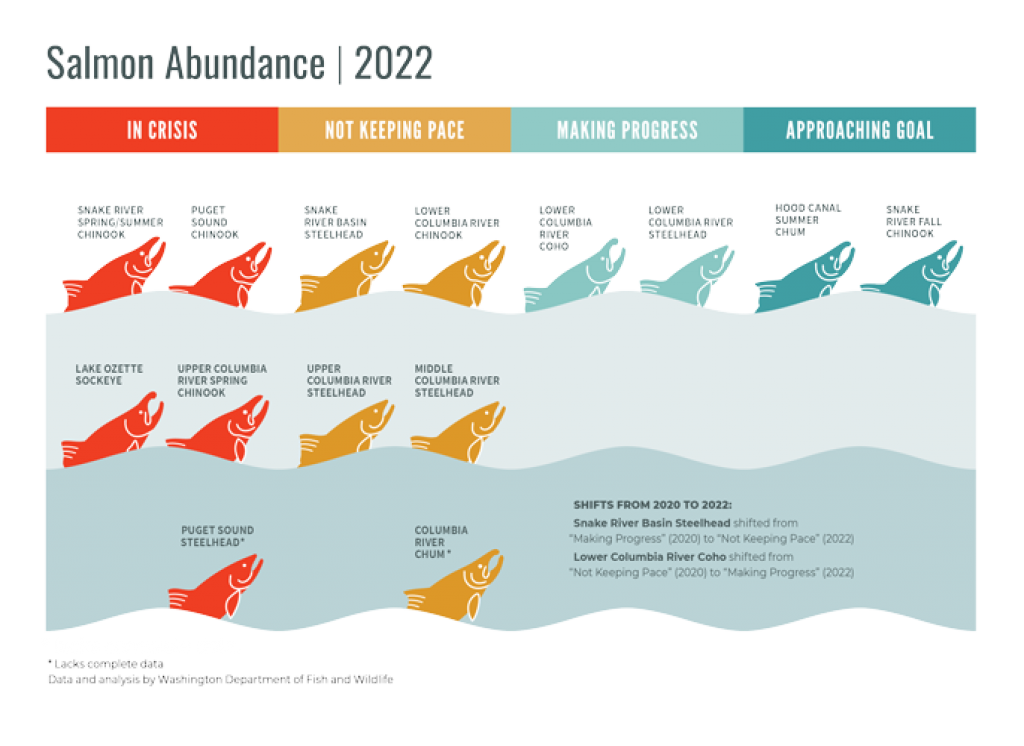Washington’s Efforts to Recover Salmon
Washington State is tackling salmon recovery in many ways, but mostly focusing on improving the places salmon live. Below is some of the work being done using RCO grants and the progress made.
- Removed 3,866 barriers blocking migrating fish, opening more than 5,000 miles of habitat.
- Restored 559 acres of wetlands, 13,918 acres of estuaries, 39,447 acres along waterways, and 32,757 acres of uplands.
- Restored 837 miles of in-stream habitat.
- Installed 495 fish screens to keep fish in rivers and out of irrigation ditches.
- Cleared 34,935 acres along rivers, wetlands, and estuaries of invasive species.
Protecting Wild Salmon by Managing Fisheries
The Washington Department of Fish and Wildlife and others mark millions of hatchery fish. These efforts help protect wild salmon by allowing anglers to identify which fish are wild and return them to the water. These efforts are vital to maintaining fishing as an important part of the state’s economy.
- Fewer wild salmon are being harvested. The harvest rate has dropped an average of 41 percent in response to Endangered Species Act listings, except for Columbia River Chinook where stocks recently have become more abundant.
- Improvements to hatcheries are reducing impacts on wild fish and are increasing the number of fish that can be caught by anglers. From 1998 to 2008, a greater number of Puget Sound and Columbia River hatchery programs met scientific standards, increasing from 18 percent in 1998 to 27 percent.
Status of Salmon
The federal Endangered Species Act and Washington State law require development of plans to detail how salmon will be recovered. The plans have been written and Washington residents have been working for decades to implement them and reverse the fate of salmon. In some parts of the state, those efforts are starting to pay off and in other areas, much work remains.
Hood Canal summer chum and Snake River fall Chinook are demonstrating large successes and continue to push toward recovery. Other species, such as Puget Sound Chinook and upper Columbia River spring Chinook are falling further behind. In most of the state, salmon are below the abundance recovery goals set in our federally approved recovery plans.

Economics of Salmon Recovery
The path to salmon recovery in Washington State means jobs for local communities. About 80 percent of grant money is spent in the county where the project is located. Using that formula, salmon restoration projects funded through the Salmon Recovery Funding Board are estimated to have resulted in:
- More than 4,400 new or sustained jobs
- Nearly $650 million in economic activity since 1999.
A $1 million investment in watershed restoration directly results in 15-33 new or sustained jobs and has been shown to create $2.2 million to $2.5 million in total economic activity.